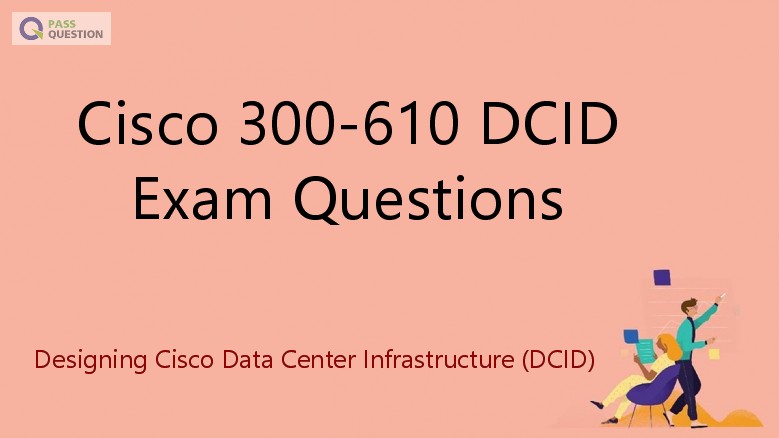Cisco 300-610 DCID Exam Questions - Designing Cisco Data Center Infrastructure
300-610 Designing Cisco Data Center Infrastructure (DCID)exam is a hot CCNP Data Center Certification test.PassQuestion Cisco 300-610 DCID Exam Questions can not only provide all the information related to the CCNP Data Center certification 300-610 exam for the candidates, but also provide a good learning opportunity for them. PassQuestion Cisco 300-610 DCID Exam Questions can help you pass Cisco 300-610 DCID Exam successfully.

300-610 DCID Exam Overview - Designing Cisco Data Center Infrastructure (DCID)
The Designing Cisco Data Center Infrastructure v1.0 (DCID 300-610) exam is a 90-minute exam associated with the CCNP Data Center and Cisco Certified Specialist - Data Center Design certifications. This exam certifies a candidate's knowledge of data center infrastructure design including network, compute, storage network, and automation.
Achieving CCNP Data Center certification proves your skills with data center solutions. To earn CCNP Data Center certification, you pass two exams: one that covers core data center technologies 350-601 Implementing and Operating Cisco Data Center Core Technologies (DCCOR) and one data center concentration exam of your choice, so you can customize your certification to your technical area of focus.
Cisco CCNP Data Center 300-610 DCID Exam Topics
This exam tests your knowledge of data center infrastructure design, including:
Network Design 35%
Compute Design 25%
Storage network Design 20%
Automation Design 20%
View Online 300-610 Free Questions From PassQuestion Cisco 300-610 DCID Exam Questions
1.What is an advantage of using OTV as compared to VPLS for data center redundancy?
A. prevents loops on point-to-point links
B. provides head-end replication
C. uses a proactive MAC advertisement
D. provides full-mesh connectivity
Answer: A
2.Which multicast rendezvous point redundancy mode is valid for Bidirectional PIM?
A. Embedded RP
B. Phantom RP
C. MSDP
D. PIM anycast RP
Answer: D
3.An engineer deploys LISP VM mobility.
Which feature is configured on the interfaces that have VM mobility enabled?
A. IP redirects
B. flow control
C. proxy ARP
D. HSRP
Answer: C
4.What are two advantages of using Cisco vPC over traditional access layer designs? (Choose two.)
A. supports Layer 3 port channels
B. disables spanning-tree
C. no spanning-tree blocked ports
D. uses all available uplink bandwidth
E. maintains single control plane
Answer: CD
5.What is a design consideration when implementing FSPF?
A. Routes are based on the domain ID.
B. Routes are based on the distance vector protocol.
C. FSPF runs only on F Ports.
D. FSPF runs on a per-chassis basis.
Answer: A
6.Which two features are provided by deploying an OOB management network in a Cisco Nexus data center? (Choose two.)
A. Layer 3 path for monitoring purposes
B. Layer 2 path for server traffic
C. Layer 2 path for a vPC peer link
D. Layer 3 path for vPC keepalive packets
E. Layer 3 path for server traffic
Answer: BC
- TOP 50 Exam Questions
-
Exam
All copyrights reserved 2025 PassQuestion NETWORK CO.,LIMITED. All Rights Reserved.

